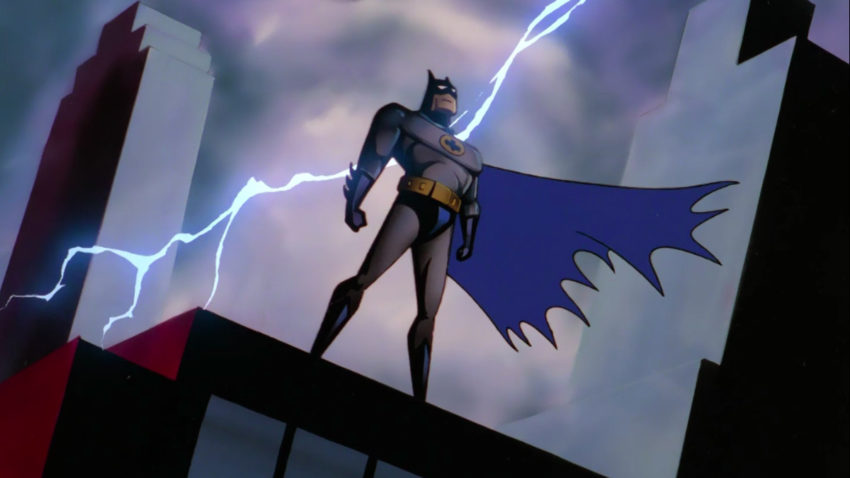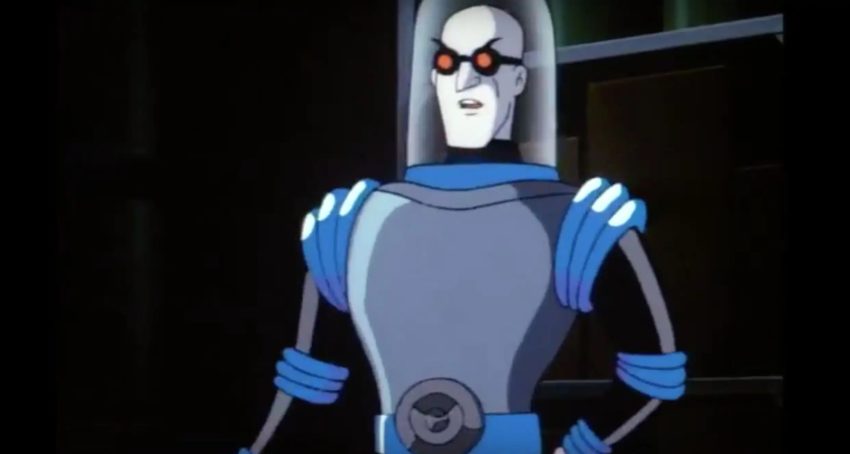Books: Batman – The Animated Series
July 14, 2021 · 0 comments
By Raz Greenberg.

Perhaps the most surprising thing about Joe Sutliff Sanders new book, Batman: The Animated Series, which analyzes the superhero show as part of Wayne State University Press’ TV Milestones brand, is that it took so long to happen.
The show, which debuted in 1992, is indeed a milestone, not just in the development of American TV animation but also in that of superhero television shows in general. Produced following Tim Burton’s two Batman films, the show took Burton’s approach in both creating a dark and intimidating atmosphere, highly unusual at the time for an American children’s cartoon, along with self-aware references to the long history of the title character and the genre that surrounds him. Its elaborate style is what made Batman: The Animated Series so dear to the heart of many anime fans.
Like most American TV animation of the 1980s and early 1990s, the show employed the services of several Japanese studios to keep down costs. According to the show’s producers, one of these studios, Spectrum Animation (founded by former employees of Tokyo Movie Shinsha – which, incidentally, also provided animation services for the show on different episodes), gave the show much of its atmospheric “layer” in creating rain and mist effects. In one notable case, the studio went to pedantic lengths airbrushing the helmet of villain Mr. Freeze, providing a level of detail that took the producers by total surprise.
The link between Batman: The Animated Series and anime is stronger than that of any other American show that came before it. The young staff behind the show represented a new generation of American animators that did not necessarily consider Walt Disney or Chuck Jones as the golden standards. Instead, many of them sought inspiration in the works of Hayao Miyazaki and Katsuhiro Otomo. Moreover, these animators were well aware that many of their Japanese collaborators had, in fact, worked with Miyazaki and Otomo. The show drew the attention of many anime fans because it was made by anime fans.

Such fans may be disappointed that there is no discussion of any of this anywhere in Sanders’ book. But those willing to dive into the book will be well rewarded for their efforts, as it explores many of the elements that they appreciated. Most of this discussion is found in the first chapter, devoted to the show’s style. Batman: The Animated Series drew attention for its background design, drawn on dark-colored papers, which gave the show an appropriately gloomy atmosphere. Sanders explores the artistic roots of this style, which became known as “Dark Deco”, and argues that, despite the producers’ claim that this style is inspired by the Art Deco movement, it owes an equal debt to a streamlined approach to design.
I suspect readers unfamiliar with the principles of Art Deco and streamlined design will have some catching up to do here. Sanders does provide explanations and background information (perhaps even too much of the latter) but he embeds both with his more general analysis of the show, to what could result in something of a confusing reading experience. The effort is worth it, though: once readers get up to speed with Sanders’ discussion of the show’s use of lines, shapes and colors, they’ll likely get a new perspective whenever they watch episodes of the show. In particular, when Sanders quotes Carissa Quiambao’s observation about how airbrushing helped Art Deco artists “emulate steel and chrome plating” and moves on to discuss how airbrushing fits well with the show’s dark backgrounds, I was almost immediately reminded of the abovementioned compliments Spectrum Animation received for their work on Mr. Freeze’s helmet. Sanders’ discussion is mostly in the artistic-theoretical context, rather than that of specific works that influenced the show: there is no mention of anime and there is only a passing mention of the Fleischer brothers’ Superman shorts (an important influence on anime as well). Readers who are ready to connect the dots between the analyses presented in the book and wider context they are familiar with, though, will find a very rewarding reading experience.

However, in the two chapters that follow, the absence of such context is more problematic. When analyzing elements as Bruce Wayne’s status among the social elite of Gotham City (chapter 2) or the character of Harley Quinn as a feminist icon (chapter 3), it is hard not to notice Sanders’ general lack of reference to the original comics. Sanders does make a minimal reference to general studies and observations on Batman‘s early titles from the 1940s. But given the fact that many of the stories told in the show adapted classic stories from the original comic books, and that Harley Quinn herself became a part of the canonical continuity in the comics after originally being created in the animated series, there appears to be a whole aspect here that Sanders strangely overlooks – that Batman is, in essence, a comic-book character. The absence of this element becomes even stranger given other comparisons that Sanders does make, to both the campy 1960s television show and Tim Burton’s films. Both the producers of the 1960s show and Burton took the protagonist in their own direction, away from his comic-book roots, while the producers of Batman: The Animated Series, hard-core fans of the character, tried to bring it back there.
Still, Sanders’ analysis of issues as social standing and mobility, capitalism and feminism, coupled with deep discussion of relevant episodes of the show, provides for an interesting reading, especially in discussing the different villains the protagonist faces. Batman fans and anime fans, I suspect, will devour this short (111 pages) monograph quickly; other researchers, I hope will decide to pass through the many doors that Sanders have opened for them with it.
Raz Greenberg is the author of Hayao Miyazaki: Exploring the Work of Japan’s Greatest Animator. Batman: The Animated Series by Joe Sutliff Sanders is published by Wayne State University Press.
Leave a Reply